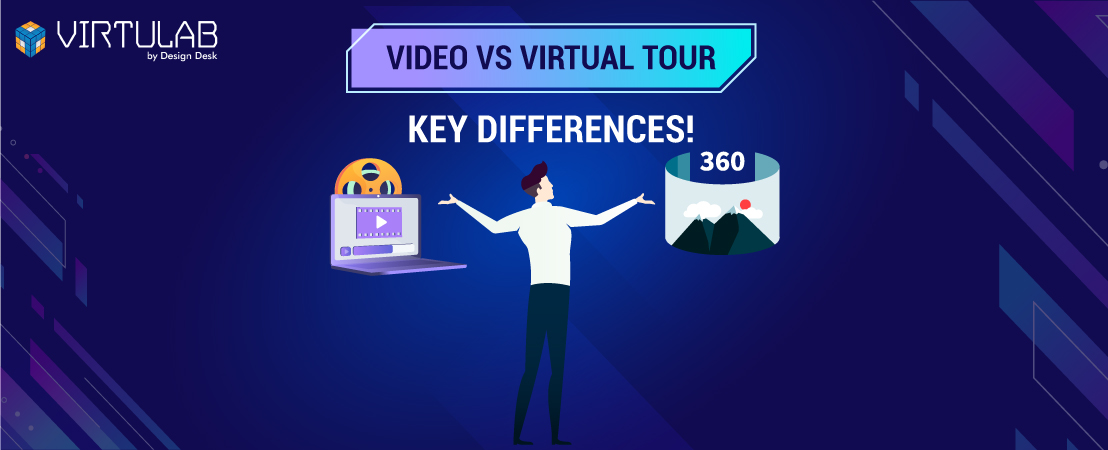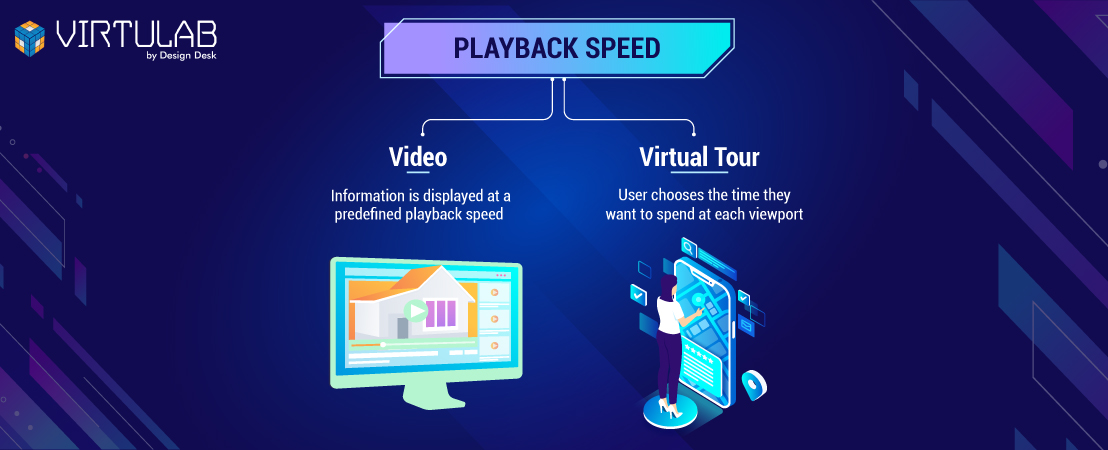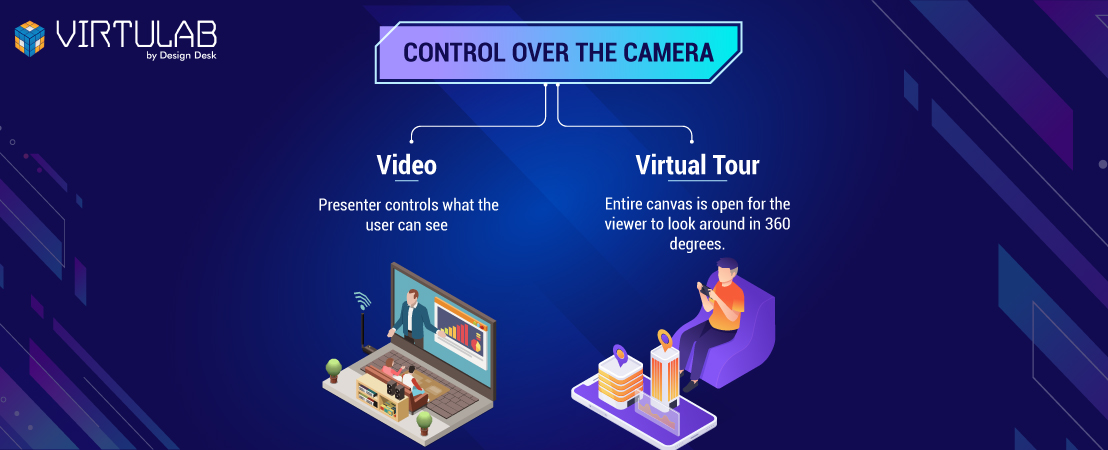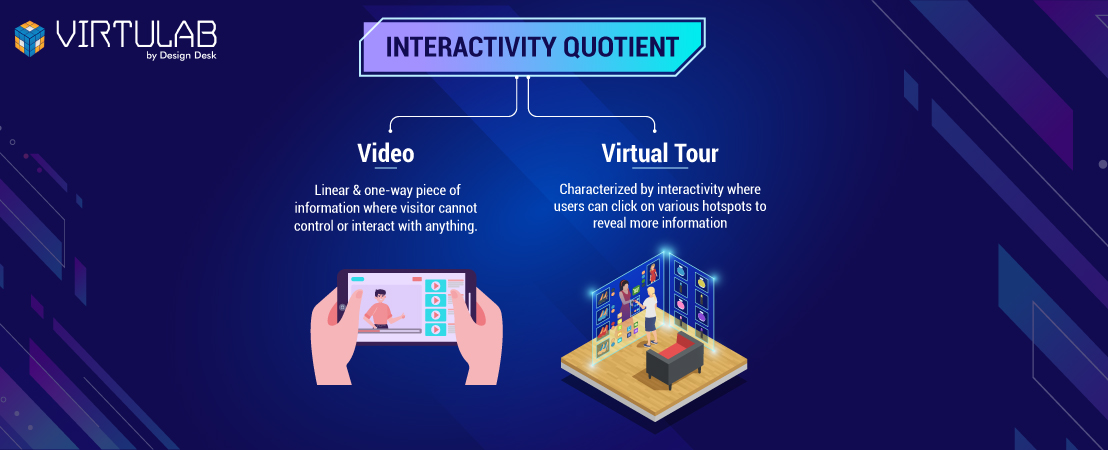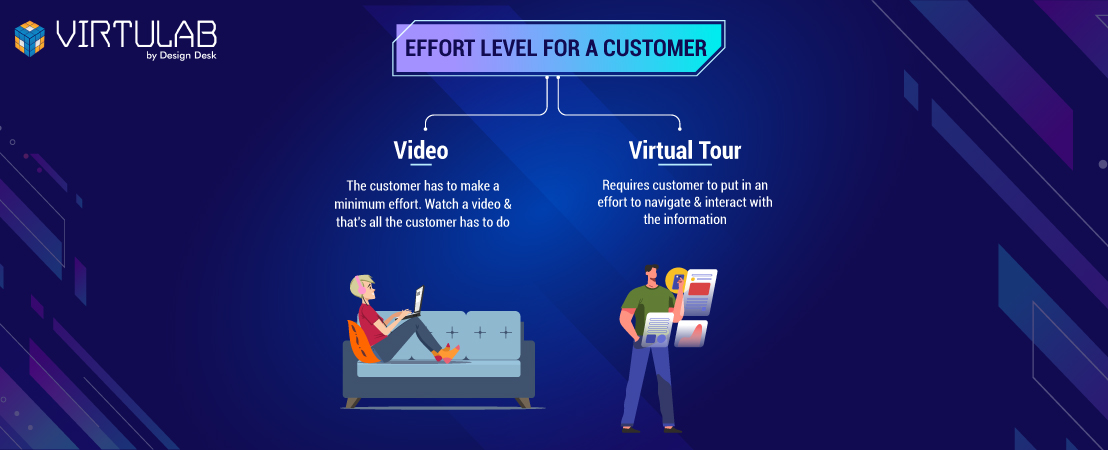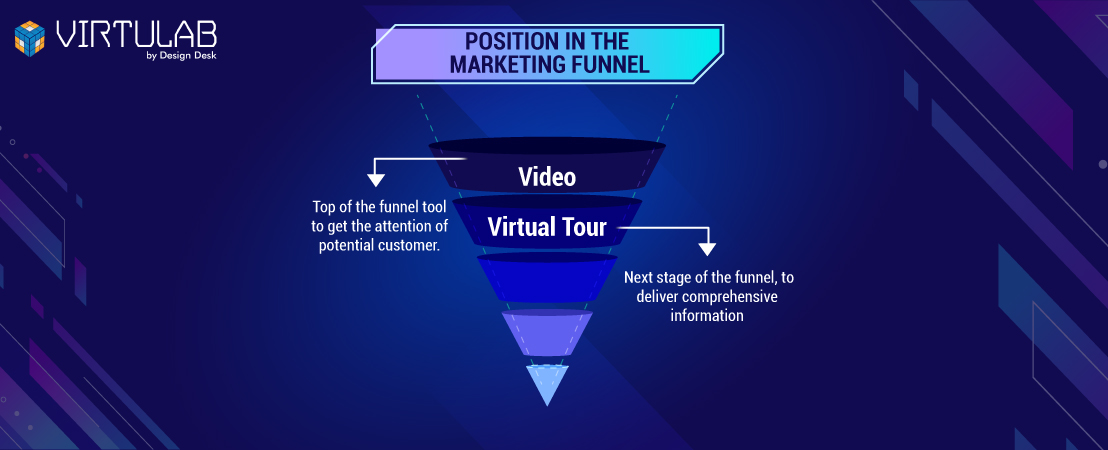To understand whether a video or a virtual tour will be better for your marketing, it is essential to understand the differences between both these options.
As both of them are a “visual display”, the differences may not be so apparent right away. However, there are many fine differences between the user experience of a Video & a Virtual Tour.
Let us look at some key differences in a video & a virtual tour as below:
Playback Speed
In a video, the information is displayed at a predefined playback speed. The user control is limited to play, pause, forward & rewind – or skip. Essentially, it is a preset experience where content is played at a defined pace & sequence and for a predefined length of time.
In a Virtual Tour, there is no pre-defined playback speed. The user chooses the time they want to spend at each viewport in the virtual tour. Navigation is also possible organically i.e. user can often choose which section they want to see or travel to after the current section.
Control Over The Camera
In a video, the presenter controls what the user can see. The video editor or presenter can choose to exclude certain parts of the product or place from the reel. Or, highlight or focus on specific parts or information.
In a virtual tour, the entire canvas is open for the viewer to look around in 360 degrees. There are no hidden or excluded parts. It gives the option to the user to review any aspect in closer detail.
Interactivity Quotient
A video is a linear & one-way piece of information where the visitor cannot control or interact with anything.
A virtual tour or virtual experience is characterized by interactivity where users can click on various hotspots to reveal more information, change the visual displayed on the screen, connect with the tour manager and many other similar actions.
Effort Level For A Customer
In a video, the customer has to make a minimum effort. Everyone knows how to watch a video & that’s all the customer has to do – watch the video playing out!
A virtual experience requires more effort from the customer as he clicks & navigates around and engages to discover & consume the information of his interest.
Innovation Quotient
It is often said the “Medium is the message”.
In that context, videos have been around for a long time & are no longer a novelty or innovative medium.
A virtual experience on the other hand is an innovative & new medium. This by default creates an interest & long lasting impression on the visitor.
Position In The Marketing Funnel
Many marketers like to use a mix of both video & virtual tours or experiences.
The video serves as the top of the funnel tool to get the attention of potential customer. And the Virtual Experience is the next stage of the funnel, to deliver comprehensive information through a deep & engaging customer experience.
A video could be good to “attract”; and a virtual experience can be great to “convince”!
Conclusion
Finally, both video & virtual tours have their respective benefits as per the scenario in which they are to be used. It would be incorrect to say that one can replace the other.
Videos have been around for decades now & you can find several examples on websites like YouTube & Vimeo.
Virtual tours are relatively new & being used in different ways like Virtual Showrooms, Virtual Experience Centre’s & Virtual Exhibition Stands.
Here are some interesting examples of Virtual Experiences across different industries.
Happy browsing!
